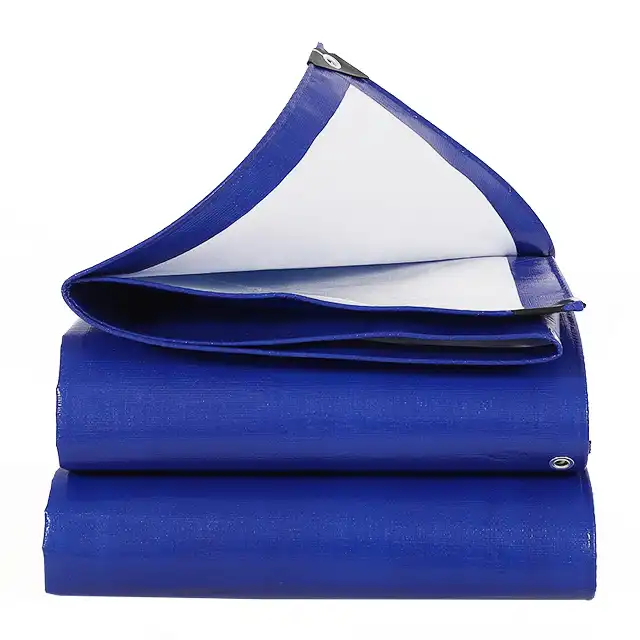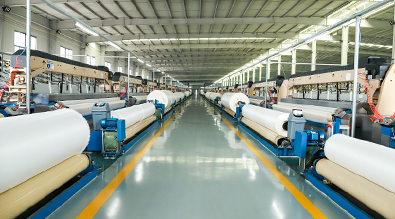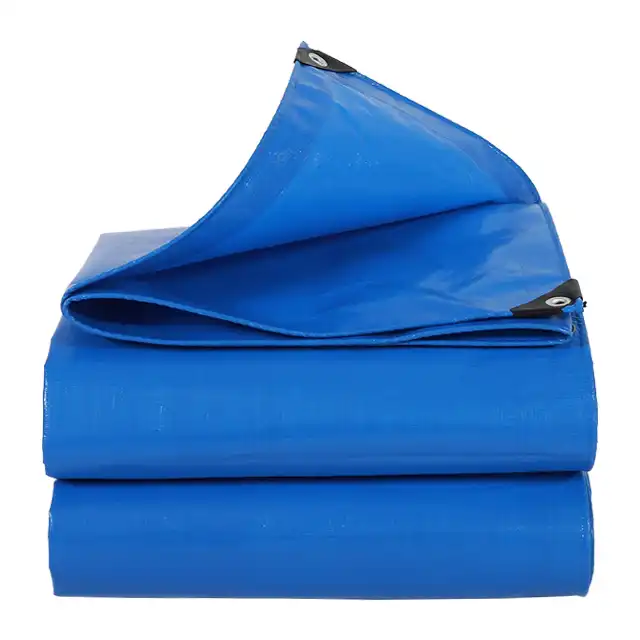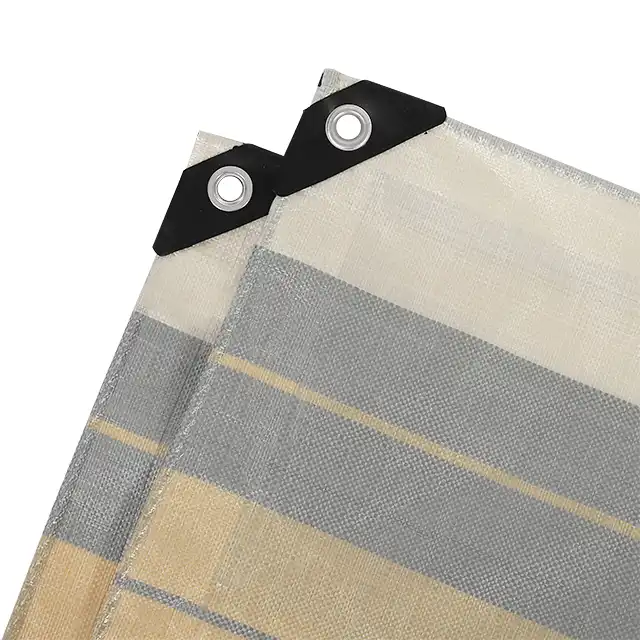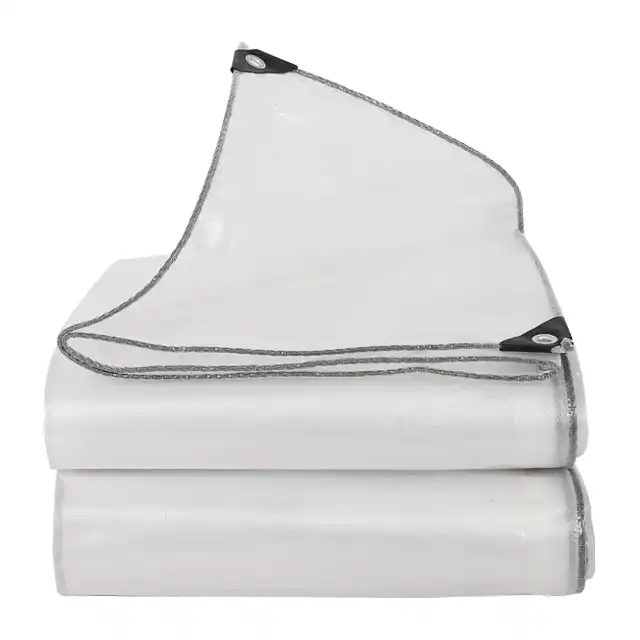Canvas Tarpaulin vs PE Tarpaulin: Pros and Cons for Outdoor Use
When selecting protective covers for outdoor applications, the choice between canvas and PE tarpaulins significantly impacts durability, cost-effectiveness, and performance. Canvas offers exceptional breathability and natural resistance to UV degradation, while PE Tarpaulin provides superior waterproofing, lightweight handling, and cost-efficient protection for diverse outdoor environments. Understanding the distinct advantages and limitations of each material enables informed decision-making for agricultural, construction, and general outdoor covering needs. This comprehensive comparison examines material properties, performance characteristics, and practical applications to help determine the most suitable tarpaulin solution for your specific requirements.
Material Construction and Durability Comparison

Canvas Tarpaulin Construction and Strength
Canvas tarpaulins are manufactured from natural cotton fibers or cotton-polyester blends, creating a robust woven fabric with exceptional tensile strength. The natural fiber construction provides inherent breathability, allowing air circulation while preventing moisture accumulation underneath the cover. Heavy-duty canvas tarps, typically ranging from 12oz to 24oz per square yard, demonstrate remarkable tear resistance and puncture protection. The tight weave structure distributes stress evenly across the fabric, making canvas particularly effective for applications requiring mechanical strength and abrasion resistance. However, canvas materials require proper treatment for waterproofing and may experience dimensional changes when exposed to moisture.
PE Tarpaulin Advanced Manufacturing Technology
PE Tarpaulin represents modern polymer engineering, utilizing high-density polyethylene fibers woven into durable fabric substrates and laminated with low-density polyethylene coatings on both sides. This construction method, employed by leading manufacturers like Linyi Shengde Plastic Co., Ltd., produces lightweight yet remarkably strong protective covers. The polyethylene construction provides inherent waterproofing without additional treatments, while the woven base fabric maintains dimensional stability under various weather conditions. PE tarpaulins typically weigh between 65gsm and 280gsm, offering superior strength-to-weight ratios compared to traditional materials. The advanced manufacturing process includes UV stabilizers integrated during production, ensuring consistent protection against harmful solar radiation.
Long-term Performance and Maintenance Requirements
Canvas tarpaulins require regular maintenance to preserve their protective qualities, including periodic retreatment with waterproofing agents and careful storage to prevent mold and mildew growth. While canvas offers excellent longevity when properly maintained, the natural fibers are susceptible to biological degradation in humid environments. PE Tarpaulin materials demonstrate superior long-term stability with minimal maintenance requirements. The synthetic polymer construction resists biological degradation, chemical exposure, and extreme temperature variations. Quality PE tarpaulins manufactured with proper UV treatment can maintain their protective properties for multiple years without significant deterioration, making them ideal for permanent and semi-permanent outdoor installations.
Weather Resistance and Environmental Performance
Waterproofing and Moisture Management
Canvas tarpaulins excel in applications requiring breathable protection, allowing trapped moisture to escape while providing reasonable water resistance when properly treated. The natural fiber construction creates microscopic air channels that facilitate vapor transmission, preventing condensation buildup underneath covered items. However, untreated canvas absorbs water, potentially adding significant weight and creating opportunities for biological growth. PE Tarpaulin offers superior waterproofing performance through its continuous polyethylene coating, creating an impermeable barrier against moisture penetration. The non-porous surface ensures complete water resistance without requiring additional treatments or maintenance applications.
UV Resistance and Solar Protection
Extended exposure to ultraviolet radiation poses significant challenges for outdoor protective materials. Canvas tarpaulins, particularly those made from natural cotton fibers, demonstrate moderate UV resistance but may experience gradual degradation over time. The natural fibers can become brittle and lose tensile strength when subjected to intense solar radiation without proper UV inhibitor treatments. PE Tarpaulin materials incorporate UV stabilizers directly into the polymer matrix during manufacturing, providing consistent protection against solar degradation. High-quality PE tarpaulins maintain their flexibility and strength characteristics even after prolonged exposure to intense sunlight, making them particularly suitable for applications in high-altitude or desert environments where UV radiation is most severe.
Temperature Stability and Seasonal Performance
Extreme temperature variations test the limits of any protective material. Canvas tarpaulins demonstrate excellent performance in moderate temperature ranges but may become stiff in extremely cold conditions and experience dimensional changes with significant temperature fluctuations. The natural fiber construction provides reasonable insulation properties but may retain moisture in humid conditions. PE Tarpaulin materials exhibit exceptional temperature stability, maintaining flexibility and strength across a wide temperature range. The synthetic polymer construction provides arctic flexibility, allowing the material to remain pliable even in sub-zero conditions while maintaining dimensional stability during thermal cycling.
Cost-Effectiveness and Application Suitability
Initial Investment and Lifecycle Economics
Canvas tarpaulins typically require higher initial investment due to material costs and manufacturing complexity. However, the potential for extended service life through proper maintenance may offset the higher upfront cost in specific applications. The natural fiber construction allows for repair using conventional sewing techniques, potentially extending service life through localized repairs. PE Tarpaulin offers exceptional value through lower initial cost combined with extended service life and minimal maintenance requirements. The synthetic construction eliminates the need for periodic retreatments and reduces storage requirements due to resistance to biological degradation.
Application-Specific Performance Optimization
Different outdoor applications demand specific material characteristics that favor either canvas or PE construction. Canvas tarpaulins excel in applications requiring breathability, such as covering stored hay, protecting construction materials that require air circulation, or creating temporary shelters where condensation prevention is critical. The natural appearance and feel of canvas make it preferred for recreational applications where aesthetics matter. PE Tarpaulin demonstrates superior performance in applications requiring complete waterproofing, such as pond liners, truck covers, construction site protection, and agricultural applications where moisture exclusion is paramount.
Manufacturing Quality and Customization Options
Professional-grade PE tarpaulins manufactured by established companies like Linyi Shengde Plastic Co., Ltd. offer extensive customization options including various weights (65gsm to 280gsm), custom dimensions up to 5 meters width without joints, and specialized features like fire resistance or enhanced UV protection. Advanced manufacturing capabilities enable production of ultra-wide tarpaulins using specialized braiding machines and precision coating equipment. Canvas tarpaulin customization is typically limited by the natural fiber properties and traditional manufacturing methods, though specialty treatments can enhance specific performance characteristics.
Conclusion
The choice between canvas and PE Tarpaulin ultimately depends on specific application requirements, environmental conditions, and performance priorities. Canvas excels in applications requiring breathability and natural aesthetics but demands higher maintenance and initial investment. PE Tarpaulin provides superior waterproofing, UV resistance, and cost-effectiveness with minimal maintenance requirements, making it the preferred choice for most outdoor protection applications. For reliable, high-quality PE tarpaulins that deliver exceptional performance and value, consider partnering with established manufacturers who combine advanced technology with proven manufacturing expertise.
Ready to discover the perfect PE Tarpaulin solution for your outdoor protection needs? As a leading China PE Tarpaulin factory with over 20 years of manufacturing excellence, Linyi Shengde Plastic Co., Ltd. stands as your trusted China PE Tarpaulin supplier, offering premium quality products backed by ISO 9001:2015 certification. Our position as a premier China PE Tarpaulin manufacturer enables us to provide competitive China PE Tarpaulin wholesale pricing while maintaining the highest quality standards. Whether you need standard PE Tarpaulin for sale or custom solutions, we deliver High Quality PE Tarpaulin at unbeatable PE Tarpaulin prices. With partnerships with UNHCR, IOM, ICRC, and UNICEF, our reputation speaks for itself. Contact us today at info@shengdetarp.com to discuss your specific requirements and experience the Shengde difference in protective covering solutions.
References
1. "Tarpaulin Material Properties and Performance Characteristics" - Industrial Fabrics Association International, Technical Report on Synthetic and Natural Protective Materials
2. "Comparative Analysis of Polyethylene and Canvas Tarpaulins in Outdoor Applications" - Journal of Applied Polymer Science, Smith, R.J. and Anderson, K.L.
3. "Weather Resistance of Protective Textiles: A Comprehensive Study" - International Conference on Technical Textiles, Thompson, M.D., Williams, P.C., and Chen, L.
4. "Cost-Benefit Analysis of Industrial Tarpaulin Materials" - Materials Engineering Quarterly, Johnson, A.R. and Rodriguez, C.M.
